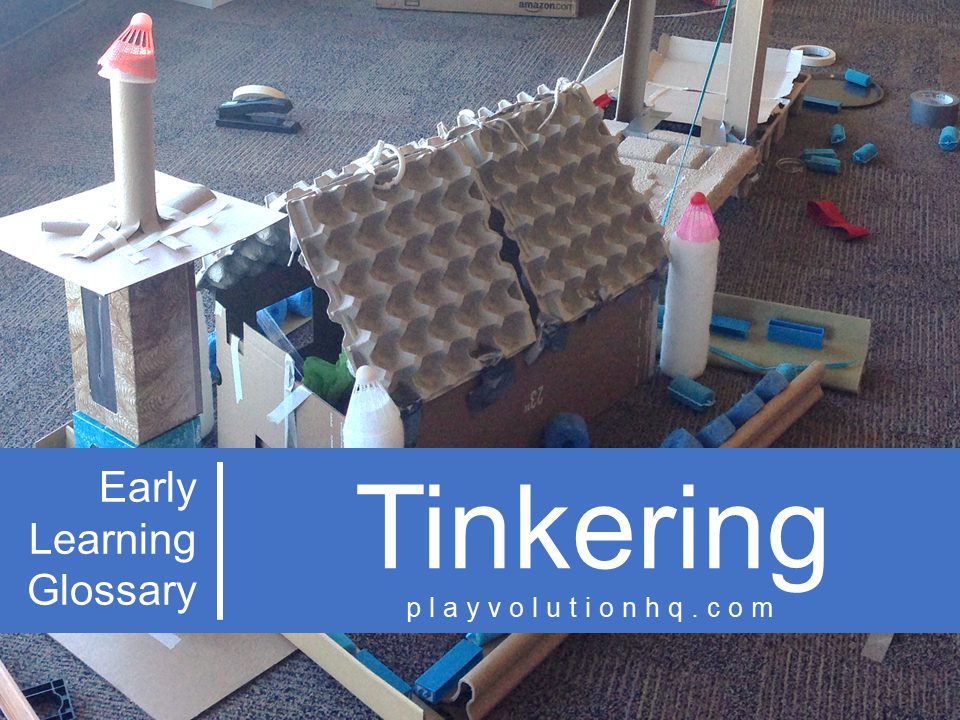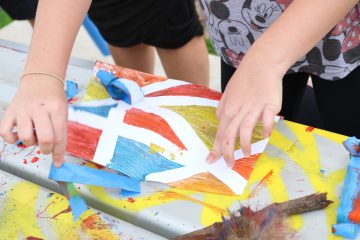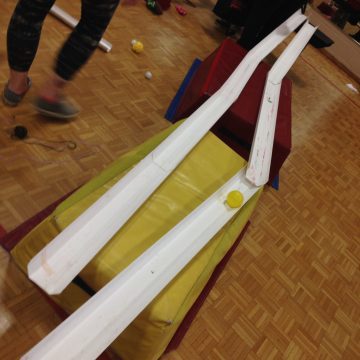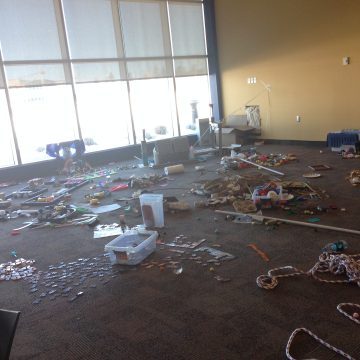
Tinkering is a playful hands-on process that encourages children to experiment, explore, and create. It is a dynamic and immersive form of play in which children interact with materials and ideas. Tinkering helps kids understand how things work, serves as a creative outlet, hones problem-solving skills, provides STEM (Science, Technology, Engineering, and Mathematics) experiences, and more.

The Benefits Of Tinkering
Here are some of the benefits of tinkering:
- Deeper Understanding—Tinkering is a very hands-on activity involving interactions with a wide variety of materials and concepts. These interactions lead to deeper and broader knowledge about the materials themselves, the way they interact with each other, other ways the may be used, and more.
- Sensory Integration—Since tinkering involves physical contact with and manipulation of various materials, it helps wire the tactile, visual, proprioception, and other sensory systems.
- Physical Development—Tinkering can improve small and large muscle strength and control, visual tracking skills, hand-eye coordination, and more.
- Fostering Creativity—Tinkering encourages outside-the-box thinking. It is a breeding ground for creativity, allowing children to unleash their imagination and come up with original ideas, designs, and solutions. This open-ended, exploratory play encourages thinking that breaks free from conventional boundaries, nurturing a creative spirit.
- Problem-Solving Skills—Tinkering teaches kids to be problem solvers. They encounter challenges and obstacles along the way, and through trial and error, they learn to overcome them. This cultivates resilience and critical thinking.
- STEM Learning—STEM subjects are a cornerstone of modern education, and tinkering is an ideal way to introduce these concepts. Through tinkering, children naturally engage with science, technology, engineering, and math. Building a robot with spare parts or creating a bridge from cardboard encourages an understanding of these subjects in a fun, hands-on way.
- Self-Confidence—When children tinker, they gain a sense of accomplishment and self-confidence. Successfully building a structure or creating a contraption empowers them and instills a belief in their abilities. When they witness the creation of a tangible result from their own hands, it reinforces a belief in their capabilities.

Flavors Of Tinkering
Children can explore tinkering in a variety of ways, including:
- Process Art—Gluing, stapling, cutting, combining, and generally fiddling with art materials.
- Woodworking—Using tools like hammers, drills, saws, and clamps to create with wood.
- Loose Parts Play—Manipulating and creating with small and large loose parts.
- Taking Things Apart—Deconstructing items ranging from cardboard boxes to small appliances like sewing machines.
- Mixing Ingredient—From making mud pies to baking apple pies, mixing ingredients is a form of tinkering.
- Construction Play—Blocks, construction sets, ramps, and loose parts offer kids the chance to build.

Tips For Encouraging Tinkering
Parents and educators can encourage tinkering with these tips:
- Diverse Materials—Offer a diverse range of materials, from cardboard and tape to old appliances and recycled item, to fuel creativity and hands-on exploration.
- Designated Tinkering Space—Set up a dedicated tinkering space where children can experiment freely. Make sure it’s well-organized with all necessary tools and abundant materials, and as much space as possible.
- Open-Ended Question—Encourage critical thinking by asking open-ended questions.
- Freedom—Let children explore, experiment, and discover solutions themselves. This includes the freedom to make and learn from mistakes.
- Collaboration—Tinkering can be a family or group activity. Join in the fun, share ideas, and celebrate the journey, not just the final product.
- Prepare For Messiness—Tinkering can get messy. Be prepared, have a mess management plan and cleaning supplies close at hand.
- Abundant Time—Tinkering isn’t usually a quick process. Allowing big blocks of time to muck about with materials supports deeper exploration.
- Focus On The Process—Tinkering’s focus should be on the doing of stuff, not the resulting finished product.

Wrap-Up
Tinkering allows children to learn through hands-on experiences, enabling them to become innovative thinkers and problem solvers. In a world where creativity and STEM proficiency are in high demand, tinkering offers a gateway to both.
Contribute content to Playvolution HQ
Brought to you by Explorations Early Learning
Thoughts On This Entry?
I’d love to hear your thoughts on improving this entry and suggestions for additional glossary additions in the comments below. You can also contact me with comments or concerns.
Browse Trainings
Author
Jeff Johnson is an early learning trainer, podcaster, and author who founded Explorations Early Learning, Playvolution HQ, and Play Haven.
In-Person And Online Training
Learn how to book an in-person or online training for your organization on these early learning topics.
Support The Site
I participate in the Amazon Services LLC Associates Program, an affiliate advertising program designed to provide a means for me to earn fees
by linking to Amazon.com and affiliate sites.
Thanks To Our Patrons
This post was made possible by patrons like these, who generously fund our work:
Supporters
Lissadell Greene Stephanie Goloway Jennifer Stark
Lagina Kozak Michelle Hankins
Marie Messinger Tamara L. Lakin
Fans
Jen Flemming Lizz Nolasco Cynthia J Bays
Susan Warner Kelly Sigalove Shawn Wolf
Vittoria Jimerson Codee Gilbert Wendy Tedford
Monica Morrell Pam Soloman Melissa Franklin
Teresa Watson Erika Felt Autumn Peele
Melissa Taylor Jahmeela Robinson Stacie Manning
Amber Maurina Terra Calamari Anne Jackson
Lagina Kozak Samantha Yeager-Cheevers
Elizebeth McCoy Sammy Cousens Ellen Cogan


Leave a Reply